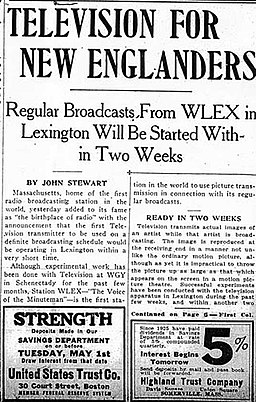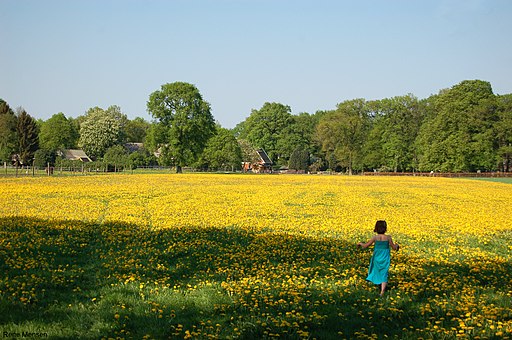Changing Partners

Clipping of a news story from the May 4, 1928 edition of The Boston Post, announcing the start of television broadcasts by station WLEX in Lexington, Massachusetts.
Next generation television, which will increase the opportunity for local broadcasters to open more sub-channels offering niche content such as old movies and television shows, is at least another year away, and probably two or three before widespread adoption. Next generation television is a voluntary standard for broadcasters to send a 4K signal accompanied by internet data over updated and more expensive transmitters. Home viewers will need a 4K television as well as a next generation tuner, known as ATSC 3.0, and an internet router in order to take full advantage of the new broadcast technology. Viewers can still watch programs broadcast in 4K without setting up to receive the internet portion of the signal, though it’s not clear now if broadcasters will encrypt some of their signals to make them available on subscription or only for those who have enabled the internet signal.
Since the FCC has made the switch voluntary, broadcasters have much wider latitude in how they implement the new technology than they did during the transition from analog to digital, and the power of the new technology itself makes more options possible. The question is whether home viewers will tolerate the targeted advertising enabled by the internet portion of the signal, looking on it as no different than any other internet service.
Fahrenheit 451, the 1966 film adaptation by François Truffaut of Ray Bradbury’s novel, here with Julie Christie and Oskar Werner, is the kind of movie that all but disappeared from broadcast television lineups in the past 30 years. With the possibility of more sub-channels becoming available after the 4K broadcast rollout, perhaps broadcasters will once again air movies like this.
For people who already have SmartTVs and use them for internet streaming there will probably be no difficulty in adjusting; for those people in the niche market of getting their video entertainment by way of a disc in the mail and then being left to enjoy it in peace, having to cope with only minor nosiness about them on the Netflix website, the adjustment may be a step too far into creepiness. It will be interesting to see if next generation 4K broadcast television and its improved reception in rural areas, combined with a wider range of content, fills the gap being left by the general move toward internet streaming and, if it keeps broadcast television free, whether it will be an improvement over most of those services, though it is hard to imagine a local television station going as far as devoting a sub-channel to obscure art house films.
— Techly 


